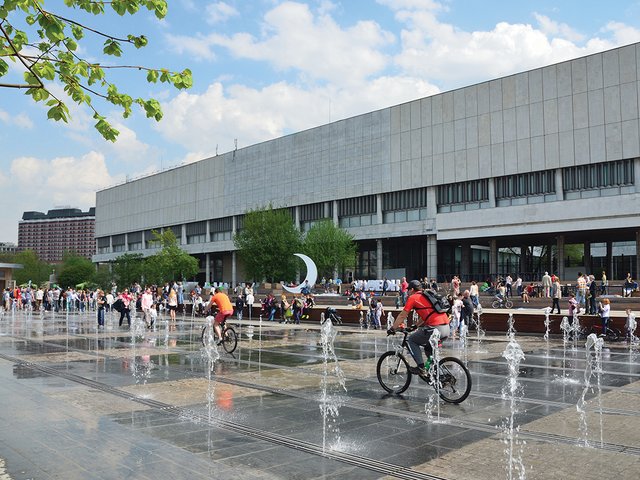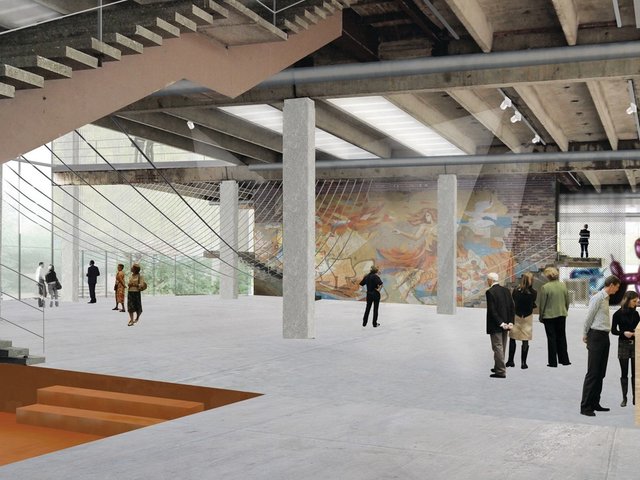Dasha Zhukova’s Garage Museum of Contemporary Art in Moscow was unveiled to the press on Wednesday with a tour by the architect Rem Koolhaas, who explained how he preserved the Brutalist architecture of the Soviet-era building in Gorky Park that has been taken over by the institution.
Koolhaas said a 1965 visit to the Soviet Union inspired his subsequent architectural career. Public architecture in Russia at the time was “very generous in terms of dimensions and very generous in terms of receiving the public”, Koolhaas said. His architectural firm OMA was responsible for turning a former restaurant pavilion, built in 1968, into a museum. Now wrapped in polycarbonate, the building retains a Brutalist feel inside, with concrete floors and pillars, but also includes whimsical touches. In the atrium, the only remaining original Soviet mosaic is complemented by a new work commissioned for the space by the non-conformist artist Erik Bulatov with the words: “Welcome to Our Garage”.
A dozen ping-pong tables have been set up on the second floor as part of the Argentine-born Thai artist Rirkrit Tiravanija’s interactive installation, which also includes Russian dumplings served from site-specific sculptures resembling Soviet bus stops. Little white balls flew around the space and often plopped down to the first floor during vigorous matches.
Two of Kusama’s Infinity Room installations are on display, while outside, trees on the path leading to the building are wrapped in the Japanese artist’s trademark polka dots.
Garage does not have a traditional collection but rather an archive of Soviet non-conformist art. The inaugural exhibitions include a display of photographs by the Moscow conceptualist artist George Kiesewalter of the city’s underground artists in the 1970s and 80s.
On the first floor there is The Family Tree of Russian Contemporary Art, a wall graphic that charts the country’s art scene with branches bearing names such as Ilya Kabakov and the 1974 Bulldozer exhibition that defied Soviet restrictions on contemporary art.
While the opening shows highlights its archive, Zhukova stressed that the museum is focussed very much on the present. “I think contemporary art is important because it records the moment in which it exists,” she told reporters.
To show that Garage is for the ages, the American artist Taryn Simon has created a work out of nuclear materials, in collaboration with ROSATOM, Russia’s nuclear energy agency. Titled Black Square XVII, it will be stored in a facility until it is safe to remove, about 1,000 years from now. Meanwhile, a square void has been prepared to receive it at Garage.



